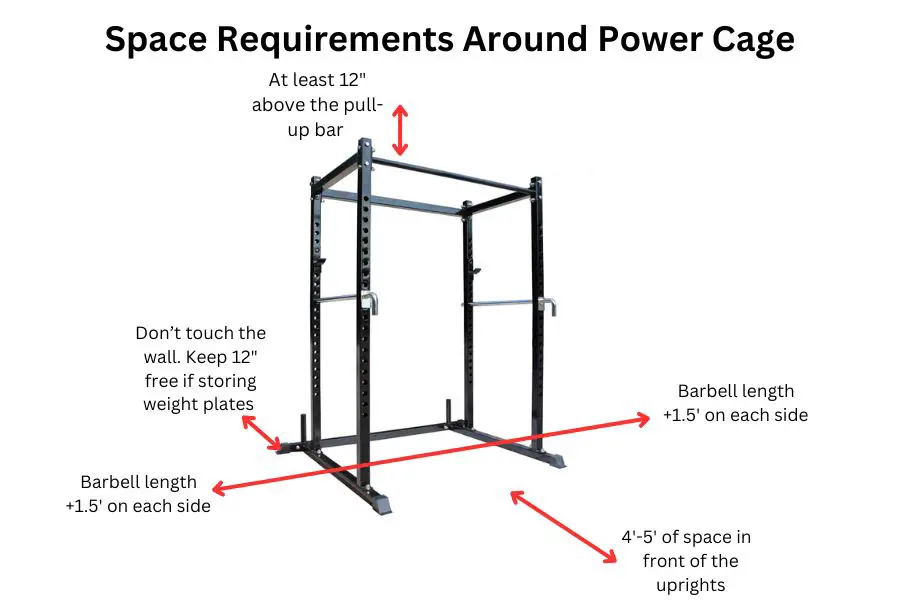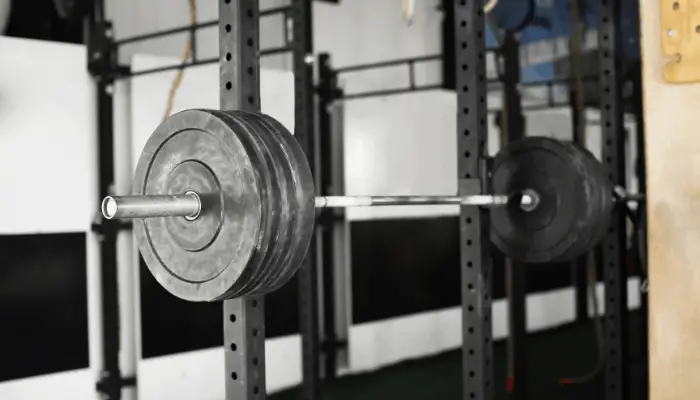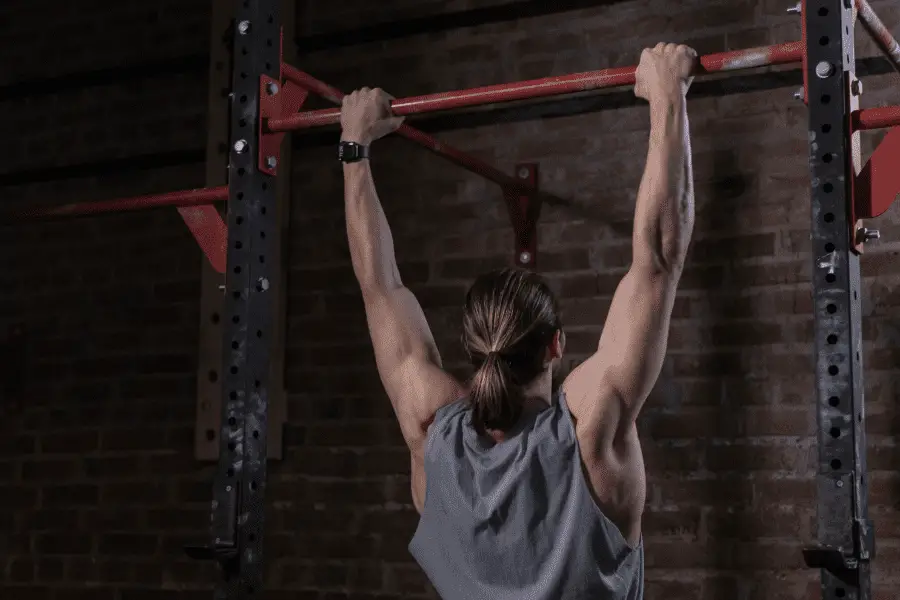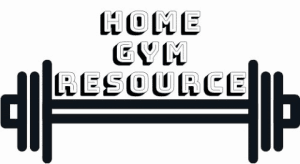A power rack, also known as a squat cage or power cage, is a super versatile piece of gym equipment that allows you to train almost all the muscles in your body when combined with a barbell. They are quite big though and the space a squat cage needs doesn’t stop there. You need a good bit of free space around your power cage to use it properly. Let’s find out how much exactly.
To use an average-sized power rack with a full-sized barbell, a minimum total space of 8′ x 10′ (234.8 cm x 304.8 cm) is necessary. It’s possible to reduce that space requirement by using a shorter barbell and shallower than average power rack.
In the rest of this article, we’ll get into how much space you need behind, in front, next to, and above your squat cage to be able to use it to its full potential.
Key takeaways
Here’s a quick summary of how much space you need around your power cage to be able to use it properly. If you want more information, click this link, which will lead you to an in-depth article about the space requirements of a power rack.

Average Power Cage Dimensions
Let’s start with the average dimensions of a power rack and work from there. If you want to know where these numbers come from, you can find that article by clicking here.
The average dimensions of a power rack are;

Of course, those are averages so your rack might be a little different. Below we’ll get into how much space you need around your squat cage so you’ll also be able to figure it out for yourself.
How Much Space Does a Squat Rack Need To Be Used?
If you just want to place a power cage in your home gym and look at it, the dimensions above are all the space you need. However, power racks aren’t all that pretty so it’s unlikely you’ll just use it as a piece of art. So do you need any extra space to actually use it?
A power rack does need space around it to be used to its full potential and here’s what you need:
Required Space Behind a Squat Rack

The back of the power rack can go close to the wall as long as it doesn’t touch. If it touches the wall it’ll just damage the wall and scratch the power rack. If there is a mirror there, you really don’t want it to touch because that can crack the mirror.
One thing to remember is that if you can store weight plates on the rear posts, you’ll need a bit more space to make room for the plates and so your hands can grab them. The largest plates are about 17.7″ in diameter (45 cm). You need about half that (8.85″) plus 2-3″ for your hands behind the rack. That means you need about 11″-12″ of free space behind the rack.
If you don’t store weight plates on the rack, you just need enough space behind it to avoid it touching the wall. If you want to store plates on your power cage, keep the rear posts about 12″ away from the wall.
Necessary Room Next To a Power Rack

The width of space you need is more about barbell length than the width of the rack. A full-sized barbell (86.75”) will stick out about 1.5’ on each side of a standard power rack. It needs some space to move from side to side. You also need room to load and unload the plates from the bar. To load and unload heavy plates you want to stand perpendicular to the barbell which means between the ends of the bar and the wall for most people about 1.5’ is enough to do this although it can be tight if you’re a bigger person.
Power racks seem big and expensive. Are they worth it? Click here to find out if a power rack is for you.
That means you need about 10’ of total width or roughly 3’ of free space on both sides of the power rack to use it and comfortably load and unload the barbell. If you’re using a shorter (79”) barbell, 9.5’ of total width is enough. There are 72” long barbells but only some of these fit on a power rack.
Keeping at least 3 feet free on both sides of the power cage allows space for the barbell and for loading/unloading the bar.
Needed Space In Front Of a Power Cage

It’s also necessary to have some free space in front of the rack. In the first place to be able to actually reach it and do some exercises in front of it but also to place a bench for things like bench presses. The bench sticks out a little and your legs probably stick out even more.
The bench press is usually done with the barbell on the front posts. That means your chest is roughly in the same position as the front posts. During the bench press, you bend at the knees. If you’re around 6′ tall, the distance from your chest to your knees will be about 35-40″.
It’s important to keep 4′-5′ of free space in front of the rack in order to be able to do access the rack, perform lifts in front of it and place a bench.
That’s the absolute minimum space you need in front of your rack. However, that doesn’t leave any room for maneuvering and your knees will be rubbing against the wall. That means keeping 4′-5′ free in front of your rack will make it useable and relatively comfortable.
If you want to deadlift in front of the rack, you need a similar amount of free space although this can also be done inside the rack, between the upright posts reducing the space requirements.
Since the average rack is a little less than 4’ deep, the total depth of your power rack floor space should be 8’ to 9’. Keep in mind this is a minimum so more space is always better. A spot to put your bench while you’re not using it is also very useful.
Some shallow racks are only 30″ deep so you can save some space that way.
Necessary Floor Space For Using a Power Rack

Let’s put all that information above together. For using a full-size barbell, you need a space that’s 10′ wide. For using a bench with a standard depth power rack, you need a space of at least 8′. So the minimum floor space you need for using a squat cage is 10′ x 8′.
You can save some space by using a shallower rack and shorter barbell but you have to make sure the bar fits on your specific rack and that you still have enough space in the rack to do all your exercises.
The minimum amount of floor space I recommend to have a power rack and properly use it is 10’ by 8’. (304.8 by 243.8 cm). This is for use with an average sized rack and full sized barbell.
Space Requirements Above A Power Rack

Any free space above the rack is important for one exercise: the pull-up.
To pull the bar to your chin, 12″ of overhead above the pull-up bar will be enough to avoid hitting your head. If you pull to the sternum, you need at least 18″ of overhead.
That space is counted from the pull-up bar. On many racks, the pull-up bar is the highest part of the rack but on others, it’s slightly lower.
When you’re shopping for a rack, this overhead requirement is important to think about when selecting a height. You want the pull-up bar to be at a height where you can stretch your arms without your feet touching the floor. At the same time, you don’t want to hit the ceiling with your head.
If you’ve got low ceilings, you’ll have to make some trade-offs. In some cases, it’s better to just get a separate pull-up bar and get the highest rack you can fit otherwise the rack will be too low.

